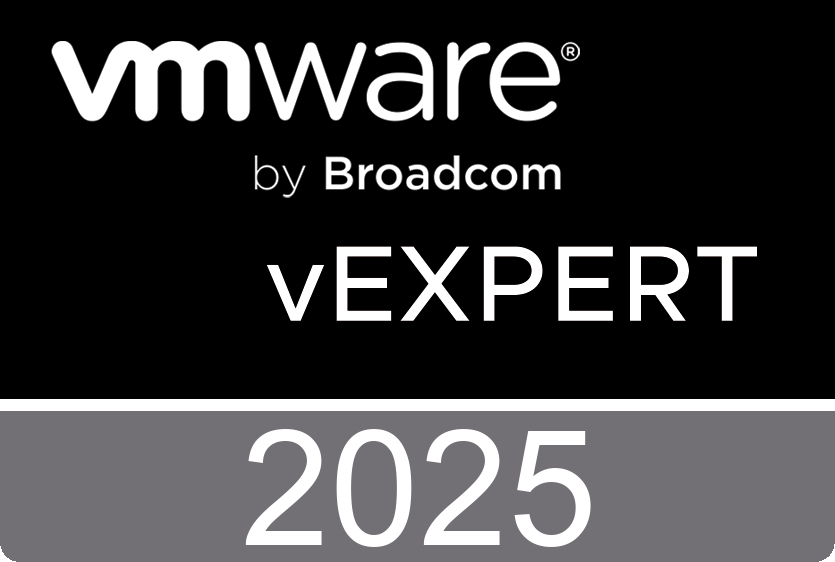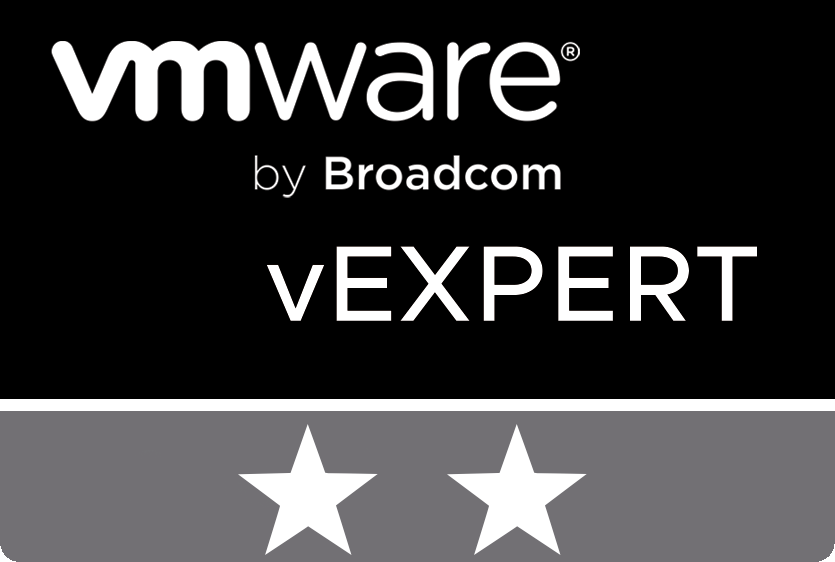[{"id":9626,"link":"https:\/\/dpcvirtualtips.com\/creating-virtual-vms-using-ansible\/","name":"creating-virtual-vms-using-ansible","thumbnail":{"url":false,"alt":false},"title":"Creating Virtual VMs Using Ansible","author":{"name":"admin","link":"https:\/\/dpcvirtualtips.com\/author\/danchiacchio\/"},"date":"Nov 18, 2025","dateGMT":"2025-11-18 13:27:11","modifiedDate":"2025-11-21 07:36:23","modifiedDateGMT":"2025-11-21 10:36:23","commentCount":"0","commentStatus":"open","categories":{"coma":"<a href=\"https:\/\/dpcvirtualtips.com\/category\/linux\/\" rel=\"category tag\">Linux<\/a>","space":"<a href=\"https:\/\/dpcvirtualtips.com\/category\/linux\/\" rel=\"category tag\">Linux<\/a>"},"taxonomies":{"post_tag":""},"readTime":{"min":8,"sec":36},"status":"publish","content":"Creating Virtual VMs Using Ansible shows an example of automating the creation of virtual machines in a lab environment. Our lab is composed of a physical server running VMware ESXi and, over it, we'll create all the necessary virtual machines"},{"id":9600,"link":"https:\/\/dpcvirtualtips.com\/creating-an-ansible-playbook-for-keeping-dns-client-settings\/","name":"creating-an-ansible-playbook-for-keeping-dns-client-settings","thumbnail":{"url":false,"alt":false},"title":"Creating an Ansible Playbook for Keeping DNS Client Settings","author":{"name":"admin","link":"https:\/\/dpcvirtualtips.com\/author\/danchiacchio\/"},"date":"Oct 24, 2025","dateGMT":"2025-10-24 13:06:57","modifiedDate":"2025-10-24 10:06:58","modifiedDateGMT":"2025-10-24 13:06:58","commentCount":"0","commentStatus":"open","categories":{"coma":"<a href=\"https:\/\/dpcvirtualtips.com\/category\/linux\/\" rel=\"category tag\">Linux<\/a>","space":"<a href=\"https:\/\/dpcvirtualtips.com\/category\/linux\/\" rel=\"category tag\">Linux<\/a>"},"taxonomies":{"post_tag":""},"readTime":{"min":3,"sec":42},"status":"publish","content":"This article shows how to create an Ansible playbook to\u00a0maintain a consistent\u00a0DNS\u00a0configuration across multiple\u00a0servers. Are you new to Ansible? Don\u2019t worry about that!We\u2019ve written an article explaining what Ansible is and what you need to do to use Ansible for"},{"id":9578,"link":"https:\/\/dpcvirtualtips.com\/creating-an-ansible-playbook-for-keeping-ntp-clients\/","name":"creating-an-ansible-playbook-for-keeping-ntp-clients","thumbnail":{"url":false,"alt":false},"title":"Creating an Ansible Playbook for Keeping NTP Client Settings","author":{"name":"admin","link":"https:\/\/dpcvirtualtips.com\/author\/danchiacchio\/"},"date":"Oct 23, 2025","dateGMT":"2025-10-23 21:59:17","modifiedDate":"2025-10-24 08:35:13","modifiedDateGMT":"2025-10-24 11:35:13","commentCount":"0","commentStatus":"open","categories":{"coma":"<a href=\"https:\/\/dpcvirtualtips.com\/category\/linux\/\" rel=\"category tag\">Linux<\/a>","space":"<a href=\"https:\/\/dpcvirtualtips.com\/category\/linux\/\" rel=\"category tag\">Linux<\/a>"},"taxonomies":{"post_tag":""},"readTime":{"min":8,"sec":35},"status":"publish","content":"This article shows how to create an Ansible playbook to maintain a consistent chrony configuration across multiple servers. Are you new to Ansible? Don't worry about that!We've written an article explaining what Ansible is and what you need to do to use"},{"id":9558,"link":"https:\/\/dpcvirtualtips.com\/creating-your-first-ansible-playbook\/","name":"creating-your-first-ansible-playbook","thumbnail":{"url":false,"alt":false},"title":"Creating Your First Ansible Playbook","author":{"name":"admin","link":"https:\/\/dpcvirtualtips.com\/author\/danchiacchio\/"},"date":"Oct 23, 2025","dateGMT":"2025-10-23 16:09:34","modifiedDate":"2025-10-24 11:06:07","modifiedDateGMT":"2025-10-24 14:06:07","commentCount":"0","commentStatus":"open","categories":{"coma":"<a href=\"https:\/\/dpcvirtualtips.com\/category\/linux\/\" rel=\"category tag\">Linux<\/a>","space":"<a href=\"https:\/\/dpcvirtualtips.com\/category\/linux\/\" rel=\"category tag\">Linux<\/a>"},"taxonomies":{"post_tag":""},"readTime":{"min":8,"sec":51},"status":"publish","content":"Creating Your First Ansible Playbook is an article that introduces Ansible for complete beginners. First and foremost: What's Ansible? It's a powerful tool for IT orchestration and automation. Ansible uses SSH to connect to target hosts and execute its tasks."},{"id":9509,"link":"https:\/\/dpcvirtualtips.com\/the-basics-of-the-find-command-on-linux\/","name":"the-basics-of-the-find-command-on-linux","thumbnail":{"url":false,"alt":false},"title":"The basics of the find command on Linux","author":{"name":"admin","link":"https:\/\/dpcvirtualtips.com\/author\/danchiacchio\/"},"date":"Oct 6, 2025","dateGMT":"2025-10-06 18:45:02","modifiedDate":"2025-10-06 17:07:32","modifiedDateGMT":"2025-10-06 20:07:32","commentCount":"0","commentStatus":"open","categories":{"coma":"<a href=\"https:\/\/dpcvirtualtips.com\/category\/linux\/\" rel=\"category tag\">Linux<\/a>","space":"<a href=\"https:\/\/dpcvirtualtips.com\/category\/linux\/\" rel=\"category tag\">Linux<\/a>"},"taxonomies":{"post_tag":""},"readTime":{"min":7,"sec":21},"status":"publish","content":"The basics of the find command on Linux include numerous examples of its usage. The find command is one of the most powerful tools in Linux for searching files and directories in a file system based on different criteria such"},{"id":9472,"link":"https:\/\/dpcvirtualtips.com\/installing-and-updating-packages-with-dnf\/","name":"installing-and-updating-packages-with-dnf","thumbnail":{"url":false,"alt":false},"title":"Installing and Updating Packages with DNF","author":{"name":"admin","link":"https:\/\/dpcvirtualtips.com\/author\/danchiacchio\/"},"date":"Oct 1, 2025","dateGMT":"2025-10-01 18:33:06","modifiedDate":"2025-10-06 17:09:21","modifiedDateGMT":"2025-10-06 20:09:21","commentCount":"0","commentStatus":"open","categories":{"coma":"<a href=\"https:\/\/dpcvirtualtips.com\/category\/linux\/\" rel=\"category tag\">Linux<\/a>","space":"<a href=\"https:\/\/dpcvirtualtips.com\/category\/linux\/\" rel=\"category tag\">Linux<\/a>"},"taxonomies":{"post_tag":""},"readTime":{"min":3,"sec":58},"status":"publish","content":"Installing and Updating Packages with DNF shows how to find, install, and update software packages using DNF. What is DNF? DNF stands for Dandified YUM.It\u2019s the next-generation package manager used in RHEL 8, RHEL 9, Fedora, and CentOS Stream. It"},{"id":9440,"link":"https:\/\/dpcvirtualtips.com\/working-with-rpm-software-packages\/","name":"working-with-rpm-software-packages","thumbnail":{"url":false,"alt":false},"title":"Working with RPM Software Packages","author":{"name":"admin","link":"https:\/\/dpcvirtualtips.com\/author\/danchiacchio\/"},"date":"Oct 1, 2025","dateGMT":"2025-10-01 15:52:07","modifiedDate":"2025-10-01 12:52:07","modifiedDateGMT":"2025-10-01 15:52:07","commentCount":"0","commentStatus":"open","categories":{"coma":"<a href=\"https:\/\/dpcvirtualtips.com\/category\/linux\/\" rel=\"category tag\">Linux<\/a>","space":"<a href=\"https:\/\/dpcvirtualtips.com\/category\/linux\/\" rel=\"category tag\">Linux<\/a>"},"taxonomies":{"post_tag":""},"readTime":{"min":4,"sec":36},"status":"publish","content":"Working with RPM Software Packages explains how Red\u00a0Hat and other sources provide software as RPM packages, and investigates the installed system packages. First and foremost: What is an RPM Software Package? The RPM Package Manager, which Red\u00a0Hat originally developed, provides"},{"id":9407,"link":"https:\/\/dpcvirtualtips.com\/gaining-superuser-access-on-rhel\/","name":"gaining-superuser-access-on-rhel","thumbnail":{"url":false,"alt":false},"title":"Gaining Superuser Access on RHEL","author":{"name":"admin","link":"https:\/\/dpcvirtualtips.com\/author\/danchiacchio\/"},"date":"Sep 29, 2025","dateGMT":"2025-09-29 12:55:11","modifiedDate":"2025-09-29 09:55:16","modifiedDateGMT":"2025-09-29 12:55:16","commentCount":"0","commentStatus":"open","categories":{"coma":"<a href=\"https:\/\/dpcvirtualtips.com\/category\/linux\/\" rel=\"category tag\">Linux<\/a>","space":"<a href=\"https:\/\/dpcvirtualtips.com\/category\/linux\/\" rel=\"category tag\">Linux<\/a>"},"taxonomies":{"post_tag":""},"readTime":{"min":5,"sec":31},"status":"publish","content":"Gaining Superuser Access on RHEL shows how to access the system with superuser privileges. We're using Red Hat Enterprise Linux; however, these examples apply to any Linux distribution. Most operating systems have a superuser (administrator) responsible for administrative and restrictive"},{"id":9376,"link":"https:\/\/dpcvirtualtips.com\/working-with-local-users-and-groups-on-rhel\/","name":"working-with-local-users-and-groups-on-rhel","thumbnail":{"url":false,"alt":false},"title":"Working with Local Users and Groups on RHEL","author":{"name":"admin","link":"https:\/\/dpcvirtualtips.com\/author\/danchiacchio\/"},"date":"Sep 26, 2025","dateGMT":"2025-09-26 15:07:52","modifiedDate":"2025-09-29 08:03:26","modifiedDateGMT":"2025-09-29 11:03:26","commentCount":"0","commentStatus":"open","categories":{"coma":"<a href=\"https:\/\/dpcvirtualtips.com\/category\/linux\/\" rel=\"category tag\">Linux<\/a>","space":"<a href=\"https:\/\/dpcvirtualtips.com\/category\/linux\/\" rel=\"category tag\">Linux<\/a>"},"taxonomies":{"post_tag":""},"readTime":{"min":8,"sec":42},"status":"publish","content":"Working with Local Users and Groups on RHEL demonstrates how to manage Linux users and groups in a Linux system using the command line. All examples provided here are based on Red Hat Enterprise Linux 10; however, they should also"},{"id":9336,"link":"https:\/\/dpcvirtualtips.com\/working-with-shell-input-and-output-on-rhel\/","name":"working-with-shell-input-and-output-on-rhel","thumbnail":{"url":false,"alt":false},"title":"Working with Shell Input and Output on RHEL","author":{"name":"admin","link":"https:\/\/dpcvirtualtips.com\/author\/danchiacchio\/"},"date":"Sep 25, 2025","dateGMT":"2025-09-25 11:30:53","modifiedDate":"2025-09-25 08:30:56","modifiedDateGMT":"2025-09-25 11:30:56","commentCount":"0","commentStatus":"open","categories":{"coma":"<a href=\"https:\/\/dpcvirtualtips.com\/category\/linux\/\" rel=\"category tag\">Linux<\/a>","space":"<a href=\"https:\/\/dpcvirtualtips.com\/category\/linux\/\" rel=\"category tag\">Linux<\/a>"},"taxonomies":{"post_tag":""},"readTime":{"min":6,"sec":57},"status":"publish","content":"Working with Shell Input and Output on RHEL aims to provide essential knowledge of standard input, standard output, and standard error on a Linux system. We'll demonstrate how to manipulate each one and how to utilize it with pipelines to"}]

